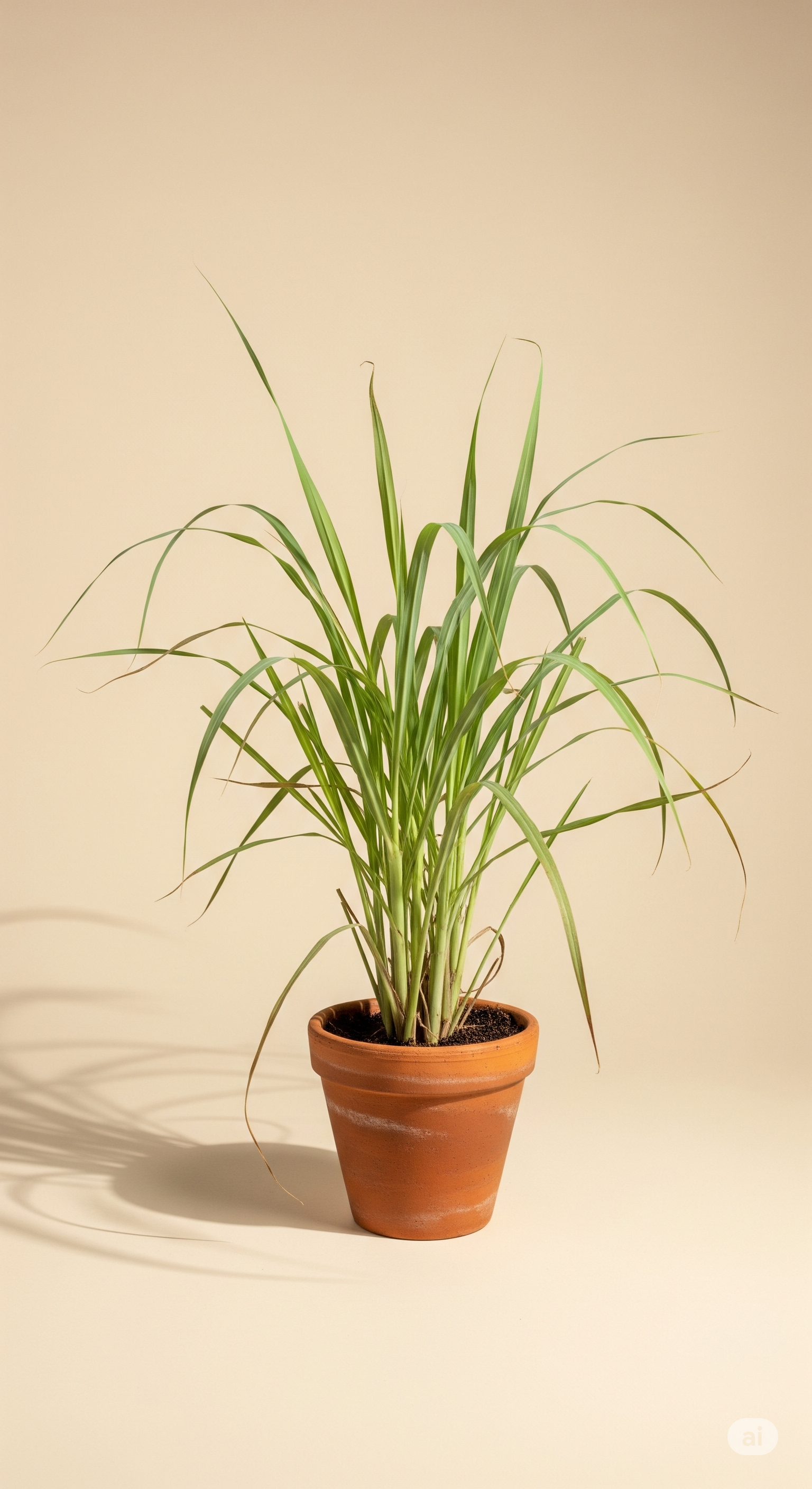Lemongrass

Scientific name: Cymbopogon citratus
☘️ Toxicity: Safe for cats
☀️ Ideal light: Full sun or very bright indirect light
💧 Watering: Moderate; keep the soil slightly moist
Lemongrass is a tropical herb known for its refreshing citrus scent and narrow, arching leaves. Commonly used in teas and cooking, it also helps repel insects naturally. With regular watering, good drainage, and plenty of sunlight, it grows fast and thrives both in gardens and pots — and it’s completely safe for cats.
Essential care
- Light: Prefers full sun, but also adapts to bright indirect light indoors.
- Water: Water regularly to keep the soil slightly moist, reducing frequency in winter.
- Soil: Rich, well-draining soil with organic matter. Ideal mix: garden soil + coarse sand + compost.
- Environment: Thrives in warm, humid climates; avoid frost and cold drafts.
- Fertilization: Feed every 30 days in spring and summer with organic compost or NPK 10-10-10.
- Maintenance: Trim dry leaves and cut stems regularly to encourage new growth.
Pests and diseases
- Aphids and scale insects: May appear in dry environments; treat with diluted neem oil.
- Fungal root issues: Avoid overwatering and ensure good drainage.
- Leaf tip burn: Often caused by low humidity — mist the leaves on hot days.
Propagation
- Division: The easiest method — separate rooted clumps and replant in moist soil.
- Water rooting: Place a stalk in a glass of water until roots appear, then transplant to a pot.
Cat safety
- Classification: Non-toxic to cats, according to ASPCA references.
- Behavior: Some cats may nibble on leaves out of curiosity; it’s harmless.
- Extra benefit: The natural lemon aroma helps repel insects without using chemicals.
💡 The citrus fragrance of lemongrass intensifies when you lightly crush its leaves — a natural release of essential oils.
Quick checklist
- ☀️ Full sun or bright light
- 💧 Regular watering, never soggy
- 🪴 Fertile, light soil
- ✂️ Trim old leaves
- 🐾 Safe for cats